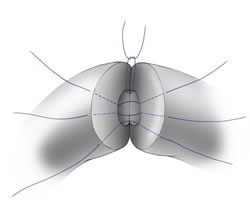Back pain is a common ailment affecting a significant portion of the adult population, particularly men, who are statistically less likely than women to seek professional help for this issue. Despite this, it is crucial for men to consult healthcare professionals, such as spine surgeons, to manage and understand the underlying causes of their back pain effectively. Men’s frequent involvement in physically demanding jobs increases their risk of developing back-related problems, highlighting the importance of addressing this issue proactively.
The causes of back pain in men vary, ranging from aging and physical overuse to medical conditions such as kidney stones and osteoporosis. Understanding these factors is essential in developing effective treatment plans and preventive measures. Without proper medical attention, men can experience worsening symptoms that may lead to more severe health issues, making early intervention and diagnosis vital.
Common Causes of Back Pain in Men
Aging and Muscle Overuse
One of the most common sources of back pain in men is the natural aging process. As men reach their 50s, signs of aging become more pronounced, metabolism slows, and physical activity often decreases. Reduced activity can lead to weakened back muscles, resulting in pain. Conversely, some men continue to engage in high levels of physical activity as they age, ignoring the body’s signs of wear and tear, which can lead to overuse injuries and significant back pain.
Kidney Stones
Men are more likely than women to develop kidney stones, a condition that becomes more common with age. Kidney stones can cause excruciating pain that starts in the back and radiates to the abdominal or flank area. Symptoms also include increased urinary urgency, nausea, and a burning sensation during urination. The intermittent nature of the pain, correlating with the movement of the stones, often necessitates medical evaluation to rule out other serious conditions.
Abdominal Aortic Aneurysm
Abdominal aortic aneurysm is another critical condition that disproportionately affects men, particularly those over 50 with a history of heart disease or hypertension. Initially, it may present as back pain when the blood vessels supplying the lower body balloon and are at risk of rupture. Prompt surgical intervention is often required to prevent a life-threatening situation.
Osteoporosis
While commonly associated with women, osteoporosis also affects about 12% of men. This condition weakens bones, making them more susceptible to fractures and causing significant pain. Other related conditions such as arthritis, spinal stenosis, and disc problems also contribute to back pain in men and can be diagnosed through MRI or X-rays.
Prevention and Management of Back Pain
Preventative measures for back pain include maintaining good posture, using tools like foam rollers to ease muscle tightness, and engaging in low-impact exercises such as yoga to enhance flexibility and reduce pain. Regular, moderate exercise can prevent muscle atrophy and strengthen the back, reducing the risk of future injuries. Importantly, men should not ignore back pain that persists; early consultation with a spine surgeon can lead to accurate diagnosis and prevent the worsening of underlying conditions.
The Role of In-Home Care in Managing Back Pain
For men dealing with chronic back pain or recovering from back surgery, in-home care can be invaluable. In-home caregivers can assist with daily activities that might be challenging due to back pain, such as bathing, dressing, and moving around the house. They also help ensure that medication schedules are followed, exercises recommended by physical therapists are performed correctly, and that any post-operative care guidelines are adhered to.
In-home care supports not only physical recovery but also provides emotional support, helping individuals cope with the frustrations and limitations associated with back pain. Caregivers can facilitate visits to healthcare providers for regular check-ups or therapy sessions, ensuring continuous monitoring and adjustment of treatment plans as needed.
Conclusion: Enhancing Management and Care for Men’s Back Health
Effective management of back pain in men requires a comprehensive approach that combines medical treatment, preventative measures, and lifestyle adjustments. Initiatives such as maintaining good posture, engaging in regular physical activity, and using therapeutic aids like foam rollers can significantly reduce the risk of back pain. Additionally, men should be encouraged to seek timely medical evaluations for back pain, ensuring that any serious underlying conditions are addressed promptly to prevent further complications.
In-home care plays a crucial role in supporting men who suffer from chronic back pain or who are recovering from related surgeries. In-home caregivers provide essential assistance with daily activities, help manage medication regimes, and ensure adherence to physical therapy exercises. This support not only aids in physical recovery but also provides emotional reassurance, which can be crucial for patients dealing with the challenges of chronic pain. By embracing a holistic approach that includes professional healthcare and supportive in-home care, men with back pain can achieve better health outcomes and enjoy a higher quality of life.




